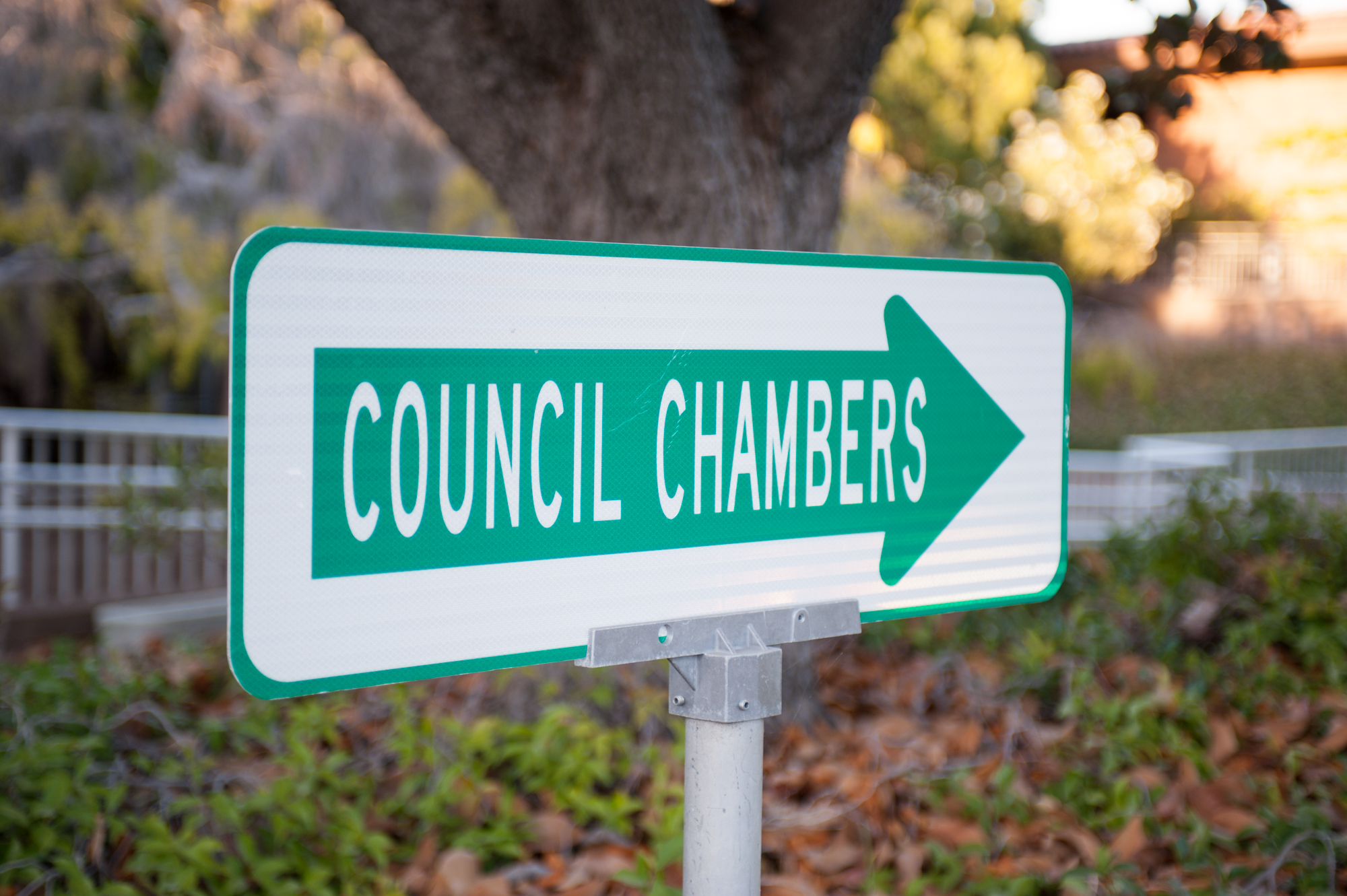Tuesday night’s Santa Clara City Council meeting wasn’t one that will soon be forgotten. Council Member Patricia Mahan announced that she will be taking a short leave from the Council after learning that her breast cancer—in remission for several years—has spread to her spine. She called the recurrence “serious but treatable.”
Mahan announced the bombshell at Tuesday night’s City Council meeting amid discussion of an article that ran in the Weekly’s Nov. 22-28 issue detailing an email exchange between Council Members Debi Davis and Teresa O’Neill. During that exchange, O’Neill accused Mahan of being “slick” by pulling out “her breast cancer survivor card.” Davis replied “this sympathy thing is BS.”
“There is a God, and She has a sense of humor, and She has a sick sense of humor,” Mahan said.
Because of the news that she would need to undergo surgery Wednesday morning, Mahan asked that the Council postpone its year-end goal-setting session until after Jan. 10, a request it obliged.
The discussion started during public presentations when Mahan’s sister, Jeannie Mahan, took up the mantle to defend her sister, calling Davis and O’Neill’s comments “appalling” and “mean-spirited.”
“I believe that when things are at their worst, people show who they really are,” Jeannie Mahan said. “Some people rise to the occasion, some sink to the depths.”
Council Member Mahan said she wasn’t interested in chastising her fellow Council Members but did implore them to “take responsibility for their words.”
“This is what the life of a survivor is. It is not a sympathy card,” she said. “Maybe my colleagues will remember this.”
Mahan got a standing ovation before excusing herself from the meeting.
Neither O’Neill nor Davis had any comments on the matter. Mayor Lisa Gillmor, who was copied on the email exchange, said only that she “didn’t know what to say,” adding that she was “sorry to hear this.”
“Affordable” Housing
One of the longest discussions Tuesday night was a new ordinance determining “affordable” housing requirements for development projects.
Andrew Crabtree, Santa Clara Director of Community Development, gave a presentation to the Council detailing how the ordinance would work. He said the ordinance would codify expectations.
The ordinance aims to provide a steady income stream to fund “affordable” housing projects with a combination of in-lieu fees and minimum requirements for the amount of “affordable” units per development. The requirement was originally set at 15 percent for rental units and 12.5 percent for for-sale housing, but Council Member O’Neill’s motion to increase the amount to 15 percent for both was accepted.
The ordinance would phase in over the next few years. Projects with a complete planning permit on file with the Community Development Department by Aug. 1, 2018 and approved before Dec. 1, 2020 would be exempt from these provisions. The fees will also be scaled to how close the development is to the ordinance’s passing, with the full brunt of the fees taking effect a year’s from the ordinance’s passing.
Vice Mayor Dominic Caserta said he would like to see a provision in the ordinance that gives developers a 25 percent discount on in-lieu fees if they pay “prevailing wages.” O’Neill’s motion directed the City Manager’s office to return with some possible changes to include that stipulation.
“We can always come back and change some elements before it goes into effect,” said Interim City Attorney Brian Doyle.
[wp-anything-slider setting=’SETTING2′]
City, VTA Partner on Santa Clara Station Development Plan
A 2.4-acre parcel of land located at Railroad Avenue and El Camino Real will become a 680-bed student housing complex with between 20,000 and 40,000 square feet of commercial space.
Republic Metropolitan, a real estate developer with a flagship office in San Jose, will work with Santa Clara University to convert the land—of which 71 percent belongs to the City and 29 percent belongs to the Valley Transit Authority.
Ruth Shikada, Assistant City Manager, told the Council that Republican Metropolitan would bear the cost of relocating the police station parking lot and public well that sits on the property. She said this project meets the General Plan’s goal to add more “transit-friendly” developments.
Entering into an exclusive negotiating agreement (ENA) with Republican Metropolitan was a point of contention for some members of the public, who saw it as unnecessary, instead believing that the City should put the project out to bid.
“Do we ever learn?” said Council mainstay Deborah Bress. “We keep stepping in the same bear traps … Who is making these bird-brained decisions? Fire them. The incompetence is rampant.”
Suds Jain, a member of the Planning Commission, said he was uncertain the project would help with total vehicle miles traveled although it is next to the train station. SCU students typically walk to their classes, he said. It would be better to put tech workers or someone who frequently would otherwise use a car to commute in that space.
But the Council disagreed.
Council Member Pat Kolstad said the development would be an “asset to the area” and “provide much-needed retail.”
“This is not a straightforward type of project,” said Mayor Gillmor, defending the decision to enter into an ENA. “It is a difficult property to develop. It has all sorts of environmental challenges.”
Because of the dual ownership, it is a “unique property,” she said. This project will serve to draw students out of single-family neighborhoods, she added.
The Council approved the agreement in a 5-1 vote. O’Neill was the lone “no” vote; cast, she said, because she opposed the ENA.
Charter Changes
A big shift in city elections could come as early as the 2018 Council election.
The Charter Review Committee presented the proposal for the June 2018 ballot to shift to two three-member City Council districts, with a ranked choice single-transferrable vote system.
Ranked choice voting allows voters to “rank” multiple candidates. The percentage needed to win is calculated based on the number of votes and the number of seats. When that threshold is reached, a second calculation is used to transfer additional votes the next choice.
If passed, the new system would apply to all elected City offices and would likely take effect by the 2020 election.
However, Council Members could be elected by district starting next year. To transition to the new system, the City would conduct staggered elections. In 2018, two members would be elected from district one to four-year terms. In 2020, they would elect one member from district one to a two-year term and three members from district two to four-year terms.
The Council will appoint an ad hoc committee to determine how to draw the district lines.
Interim City Attorney Doyle said he anticipates putting the districts in place through an ordinance by spring 2018.
Lobbyist Ordinance
The Council also discussed a new fee schedule for lobbyists operating in the City. Under the new schedule, lobbyists would pay additional fees for each client they represent in addition to a 22 percent increase in annual fees increasing from $523 to $640 a year.
However, the fee schedule was not most of the discussion about the lobbyist ordinance. Members of the public expressed chagrin at the ordinance’s failure to require lobbyists to identify themselves when speaking at Council meetings.
“It doesn’t make sense that we have this ordinance if we are not enforcing it,” said Mayor Gillmor.
Many said the ordinance needed “more teeth,” a popular catchphrase among the Council to indicate that the details of something—usually an ordinance or resolution—are not aggressive enough to achieve its goals.
Requiring lobbyists to fill out new speaker cards with a box to check if the speaker is a lobbyist could offer a simple solution, Doyle said.
However, the new fee schedule passed unanimously without “teeth.”
Union Contracts
The Council also approved three contracts with unions. The first was with the Public Safety Non-sworn Employees Association, which saw a 7 percent wage increase the first year and a “at least” 3 percent wage increase the second year. Taxpayers will also continue to pay $1,261.76 a month for employees enrolled in the City health plan as well as the lowest cost employee-only premium for dental and vision insurance. Finally, the contract increases the uniform allowance from $525 to $575.
Similar agreements with the Unclassified Police Management Association and the Police Officers Association saw those unions get a 5 percent wage increase the first year and “at least” a 3 percent raise the second year. Similarly, taxpayers will pay $200 more than the Kaiser employee-only premium towards health insurance, as well as the lowest cost employee-only plan towards dental and vision insurance.
The Council’s next regular meeting will be held 7 p.m. Tuesday, Dec. 19 in the Council Chambers at City Hall, 1500 Warburton Ave. in Santa Clara.












0 comments